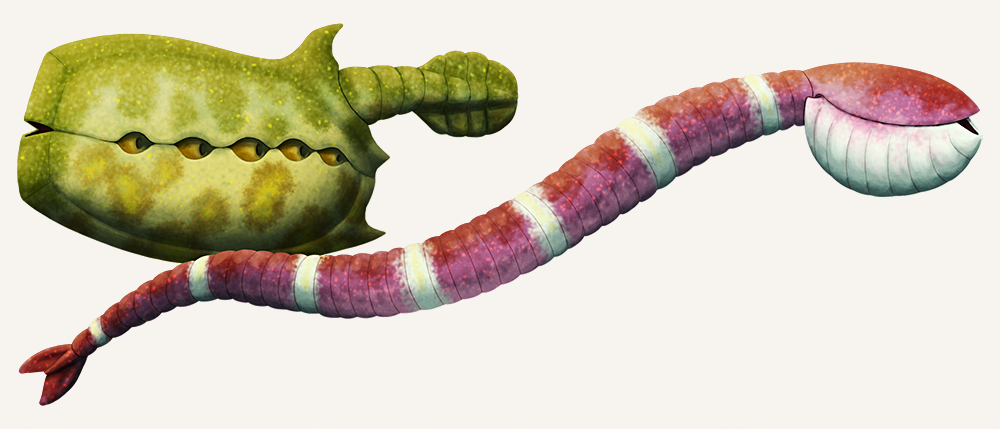Vetulicolians were a group of odd Cambrian animals known from between about 520 and 505 million years ago. The front half of their bodies were large and streamlined, with a prominent mouth, no eyes, and five pairs of openings that seem to have been gills, with some species having a rigid exoskeleton-like carapace. Their back half was slender, segmented, and flexible, and functioned as a tail for swimming, giving them an overall appearance like alien tadpoles.
Their evolutionary affinities have been problematic for a long time, but evidence of a notochord in some specimens suggest they were probably related to the chordates in some way. Sometimes they’re considered to represent their own phylum, but they might also be stem-chordates or stem-tunicates.
Continue reading “Cambrian Explosion Month #17: Phylum(?) Vetulicolia & Other Early Deuterostome Weirdos”
